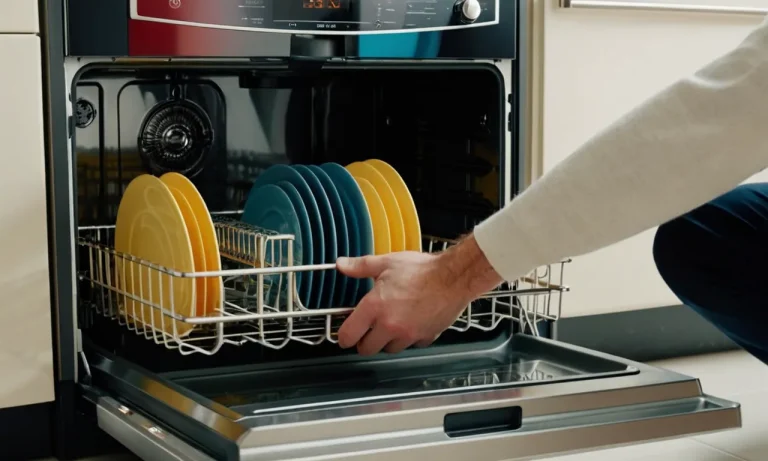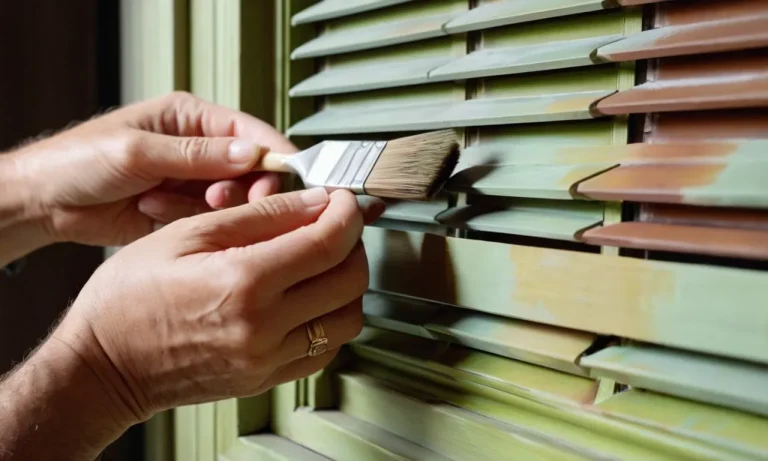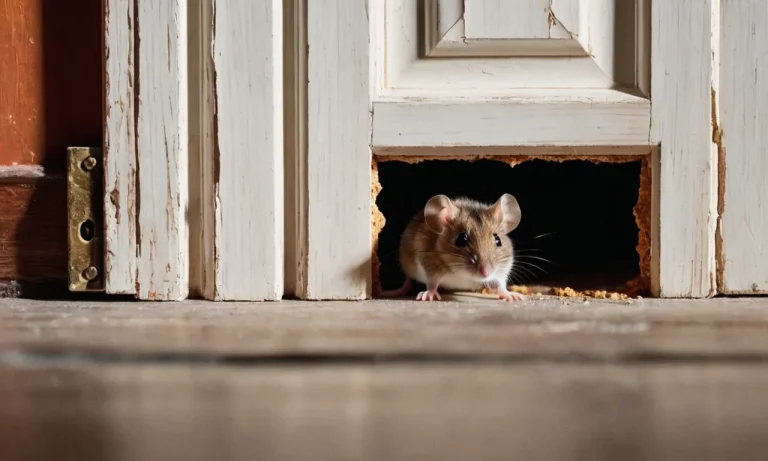Best Insulation For Floor Joists: A Comprehensive Guide
Insulating your floor joists is one of the most effective ways to make your home more energy efficient. Properly insulating the cavities between your floor joists can help reduce heating and cooling costs, increase comfort levels, and prevent moisture buildup.
But with so many insulation options on the market, how do you know which is best for insulating floor joists specifically? In this comprehensive guide, we’ll walk you through everything you need to know to choose the right insulation for your floor joists.
If you’re short on time, here’s a quick answer: Fiberglass batt insulation is often the best choice for insulating floor joists because it’s affordable, easy to install, and provides good insulation value while allowing moisture to pass through.
Different Types of Insulation for Floor Joists
When it comes to insulating your floor joists, there are several different types of insulation materials to choose from. Each type has its own unique characteristics and benefits. Let’s take a closer look at some of the most popular options:
Fiberglass Batt Insulation
Fiberglass batt insulation is a commonly used option for insulating floor joists. It is made of tiny glass fibers that are bound together to create a fluffy material. This type of insulation is easy to install and is available in pre-cut sizes that fit standard joist spacing.
Fiberglass batt insulation is known for its excellent thermal performance and affordability. It can effectively reduce heat transfer and improve energy efficiency in your home.
Mineral Wool Insulation
Mineral wool insulation, also known as rock wool insulation, is made from natural minerals like basalt or diabase. It is a dense material that offers excellent soundproofing and fire-resistant properties.
Mineral wool insulation is hydrophobic, meaning it repels water and does not promote the growth of mold or mildew. It is a great option for areas that require moisture resistance, such as basements or crawl spaces.
Spray Foam Insulation
Spray foam insulation is a highly versatile option that can be used to insulate floor joists. It is applied as a liquid and expands to fill any gaps or cracks, creating an airtight seal. Spray foam insulation provides excellent thermal insulation and helps to reduce energy costs.
It also acts as an effective sound barrier and can improve the overall comfort of your home. However, it is important to hire a professional for the installation, as it requires specialized equipment and expertise.
Rigid Foam Board Insulation
Rigid foam board insulation is a durable and lightweight option for insulating floor joists. It is made from polystyrene or polyisocyanurate and is available in different thicknesses. Rigid foam board insulation has a high R-value, which means it provides superior thermal insulation.
It is resistant to moisture and mold growth, making it suitable for areas with high humidity. Rigid foam board insulation can be easily cut to fit between joists, making installation a breeze.
Factors to Consider When Choosing Insulation
Choosing the right insulation for your floor joists is crucial in maintaining energy efficiency and comfort in your home. There are several factors to consider when making this decision, including:
Insulation Value
The insulation value, also known as the R-value, is a measure of how well the insulation material resists heat flow. The higher the R-value, the better the insulation’s ability to keep your home warm in the winter and cool in the summer.
It is important to choose insulation with a high R-value to maximize energy efficiency and reduce heating and cooling costs. According to the U.S. Department of Energy, the recommended R-value for floor insulation in most climates is between R-25 and R-30.
Cost
The cost of insulation can vary depending on the type of material and the size of the area to be insulated. Fiberglass insulation, for example, is generally more affordable compared to other types such as spray foam insulation.
However, it is important to consider the long-term savings that come with investing in higher-quality insulation. Insulation with a higher R-value may have a higher upfront cost but can result in significant energy savings over time.
Ease of Installation
The ease of installation is another important factor to consider when choosing insulation for your floor joists. Some types of insulation, such as batt or roll insulation, can be easily installed by homeowners with basic DIY skills.
On the other hand, spray foam insulation may require professional installation due to its specialized application process. It is important to consider your own abilities and the complexity of the installation process when selecting an insulation type.
Moisture Control
Moisture control is a crucial factor to consider, especially in areas with high humidity or moisture concerns. Moisture can lead to mold and mildew growth, which can damage the structure of your home and pose health risks.
It is important to choose insulation that has moisture-resistant properties to prevent moisture buildup and protect your home. For areas prone to moisture, closed-cell spray foam insulation is often recommended due to its ability to create an air and moisture barrier.
By considering these factors, you can make an informed decision when choosing insulation for your floor joists. Remember to consult with professionals and refer to authoritative sources such as the U.S.
Department of Energy for additional guidance in selecting the best insulation for your specific needs.
How to Install Insulation in Floor Joists
Gather Materials and Safety Gear
Before you start installing insulation in your floor joists, it’s important to gather all the necessary materials and safety gear. You will need insulation batts or rolls, a utility knife or insulation cutter, a measuring tape, a staple gun or insulation hangers, and safety goggles and gloves.
Inspect and Prepare the Area
Prior to installing insulation, it’s crucial to inspect and prepare the area. Start by checking for any moisture or water leaks, as these can compromise the effectiveness of the insulation. Make sure the floor joists are clean and free from debris.
If necessary, use a broom or vacuum to remove any dirt or dust.
Next, measure the distance between the floor joists to determine the size of the insulation batts or rolls you’ll need. It’s important to choose the right thickness of insulation for maximum efficiency. Remember, the higher the R-value, the better the insulation will be at preventing heat transfer.
Cut Insulation to Fit
Once you have measured the distance between the floor joists, it’s time to cut the insulation to fit. Use a utility knife or insulation cutter to carefully cut the insulation batts or rolls to the correct size. Be sure to wear safety goggles and gloves to protect yourself from any fibers or debris.
When cutting the insulation, it’s important to leave a small gap on each side to allow for expansion. This will help prevent any bulging or shifting of the insulation over time. Remember, a snug fit is key to ensuring maximum insulation efficiency.
Secure the Insulation in Place
After cutting the insulation to size, it’s time to secure it in place. There are a few different methods you can use, depending on your preference and the type of insulation you have. One common method is to use a staple gun to attach the insulation to the floor joists.
Alternatively, you can use insulation hangers or clips to secure the insulation.
It’s important to evenly distribute the insulation throughout the floor joists to ensure consistent coverage. Pay special attention to any gaps or areas where the insulation may be thinner. These areas can be a source of heat loss and should be addressed accordingly.
Once the insulation is securely in place, take a moment to inspect the entire area and make any necessary adjustments. Ensure that the insulation is properly aligned and there are no gaps or bulges. This will help maximize its effectiveness in preventing heat transfer and saving energy.
Installing insulation in your floor joists is a great way to improve energy efficiency in your home. By following these steps, you can ensure a proper and effective insulation installation that will help keep your home comfortable and reduce your energy costs.
Tips for Maximizing Insulation Efficiency
Air Seal First
When it comes to insulating your floor joists, one of the most important steps is air sealing. Before installing any insulation, ensure that there are no gaps or cracks in the area. These gaps can let air flow freely, reducing the effectiveness of your insulation.
Use caulk or foam sealant to seal any openings, ensuring a tight seal. This will prevent air leakage, keeping your home more energy-efficient.
Use Faced Insulation Right Side Out
When using faced insulation for your floor joists, it’s essential to install it correctly. The facing, usually made of kraft paper or foil, should be facing the living space or the inside of your home. The facing acts as a vapor barrier, preventing moisture from entering the insulation.
Installing it the wrong way can lead to moisture buildup and potential damage to the insulation and surrounding areas.
Fill Gaps Completely
Ensuring that all gaps in your floor joists are completely filled with insulation is crucial to maximize its efficiency. Even small gaps can allow air to pass through, reducing the overall effectiveness of your insulation.
Take the time to carefully measure and cut the insulation, ensuring a snug fit. Use a utility knife to trim any excess insulation if needed. By filling all gaps completely, you’ll create a continuous thermal barrier, improving the energy efficiency of your home.
Add Extra Insulation Over Joists
To further enhance the insulation efficiency of your floor joists, consider adding an extra layer of insulation directly over the joists. This additional layer will provide added insulation and help prevent thermal bridging, where heat escapes through the joists.
You can use rigid foam insulation or batt insulation for this purpose. Be sure to measure and cut the insulation to fit snugly between the joists, and secure it in place using insulation supports or staples.
Remember, proper insulation of your floor joists is essential for energy efficiency and maintaining a comfortable living environment. By following these tips and ensuring a well-insulated space, you can save on energy costs and enjoy a more comfortable home.
Common Mistakes to Avoid
Not Air Sealing First
One of the most common mistakes when insulating floor joists is neglecting to air seal the area first. Air leaks can significantly reduce the effectiveness of insulation and allow drafts to enter your home.
To avoid this mistake, it is important to seal any gaps, cracks, or openings before installing insulation. This can be done using caulk, foam sealant, or weatherstripping. By taking the time to properly air seal, you can ensure that your insulation performs at its best and provides optimal energy efficiency.
Leaving Gaps and Voids
Another mistake to avoid when insulating floor joists is leaving gaps and voids in the insulation. These gaps can occur when insulation is not properly fitted or installed. Leaving gaps can lead to thermal bridging, where heat escapes through the uninsulated areas and undermines the overall insulation effectiveness.
To prevent this, it is crucial to carefully measure and cut the insulation to fit snugly between the floor joists. Additionally, filling any voids with insulation material will help to maintain a continuous thermal barrier.
Improper Installation of Faced Insulation
Using faced insulation without proper installation is another common mistake to be aware of. Faced insulation has a vapor barrier attached to it, which helps prevent moisture from entering the insulation and causing damage.
However, if the facing is not installed correctly, it can actually trap moisture and lead to mold and mildew growth. To avoid this, it is important to carefully follow the manufacturer’s instructions when installing faced insulation.
This may include using staples or adhesive to securely attach the facing to the joists, ensuring a tight seal.
Using Too Little or Too Much Insulation
Finding the right amount of insulation is crucial for optimal energy efficiency and comfort. Using too little insulation will result in inadequate thermal protection, while using too much insulation can lead to compressed or ineffective insulation.
To determine the proper amount, it is recommended to consult insulation guidelines provided by organizations such as the Department of Energy or professional insulation contractors. These guidelines take into account factors such as climate, insulation type, and desired R-value.
By following these recommendations, you can ensure that you have the right amount of insulation for your floor joists.
By avoiding these common mistakes, you can ensure that your floor joists are properly insulated, leading to improved energy efficiency, comfort, and cost savings.
Conclusion
Insulating your floor joists properly is a crucial step in increasing your home’s energy efficiency. Fiberglass batt insulation is often the best choice because it’s affordable, easy to install correctly, and provides excellent insulation value.
Be sure to thoroughly air seal before installing insulation. And don’t forget to avoid common mistakes like leaving gaps, compressing the insulation, and installing faced insulation backwards. With the right insulation installed properly, you can enjoy a more comfortable, energy efficient home.
For more detail on selecting insulation materials or the installation process, be sure to check out the rest of this comprehensive guide.







